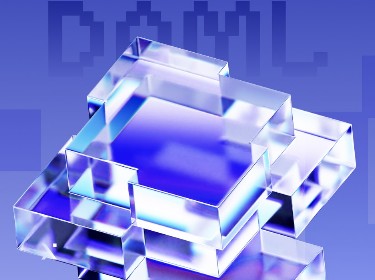The long-awaited Ethereum Merge has been successfully delivered. However, a number of industry experts and enthusiasts have been pondering over how it will impact Ethereum’s Layer 2 solutions: will they no longer be needed or will they complement the newly upgraded Ethereum?
On September 15, 2022, the Ethereum network finally implemented the Proof-of-Stake (PoS) consensus instead of its Proof-of-Work (PoW) mechanism that it relied on for many years. The event commonly referred to as the Merge has allowed the network to reduce its energy consumption by approximately 99.95%, making Ethereum a green blockchain.
Still and all, the Ethereum upgrade has raised lots of questions too, the most widespread related to the future of its Layer 2 scaling solutions. It has been unclear whether they will remain as popular as they used to be, or whether their time is up.
In this article, we will analyze the prospects of Ethereum’s Layer 2 solutions and try to figure out what the future has in store for them.
Buckle up and let’s delve into the details.
Check out our comprehensive overview of the Ethereum Merge
What will be the impact of the Merge on Layer 2 solutions?
![]()
The Ethereum ecosystem is known to have numerous Layer 2 solutions that have been specifically designed to boost Ethereum’s scalability and allow for faster transactions and reduced energy consumption. The most outstanding examples of Ethereum L2 solutions are Polygon, Optimism, and Arbitrum.
However, the introduction of the Merge (i.e. its transition to PoS) is said to boost the blockchain’s performance, making some people think that the future of L2 solutions is up in the air since they are no longer needed.
But let’s chase away any guesses and assumptions and provide the answer to this burning issue straight away.
The Merge will not have a substantial impact on Layer 2 scaling solutions and they will continue to play an important role in both the short and long term. L2 chains will remain widely sought after, as they will help to enhance the value of the network and preserve its existing benefits, and they will continue to co-exist and develop in parallel with Ethereum.
The reason for this is that the Merge, and consequently the current version of Ethereum, are still unable to resolve the challenges related to high gas fees and network congestion, which makes it logical to assume that Ethereum will be reliant on Layer 2 scaling solutions in the future.
Plus, the Merge is thought to enhance the performance of Layer 2 solutions too, meaning that they will maintain reciprocally profitable relations with Ethereum.
And finally, the Ethereum Foundation itself has made it clear that Layer 2 solutions remain of great importance, stating that “The Ethereum ecosystem is firmly aligned that Layer 2 scaling is the only way to solve the scalability trilemma while remaining decentralized and secure.”
What are the prospects of Polygon, Optimism, and Arbitrum after the Merge?
To be more specific, let’s dive more deeply into how exactly Ethereum’s top scaling solutions — Polygon, Optimism, and Arbitrum — are going to benefit from the Merge, and what their future looks like.
The Merge and Polygon
Polygon, one of the most prominent Ethereum Layer 2 solutions, reported that the Merge would enable it to cancel out around 60,000 tonnes of its carbon footprint, making it much more environmentally friendly.
An important thing to note is that the Merge has not impacted other aspects of Polygon such as smart contracts, bridges, and MATIC staking.
In fact, many industry leaders believe that Polygon and the upgraded PoS-powered Ethereum will co-exist perfectly and complement each other. In addition, coupled with the benefits of the PoS transition, the new Polygon zkEVM development will make it possible for Ethereum to reach greater milestones.
The Merge and Optimism
The Optimism Layer-2 solutions stand to benefit from the Ethereum Merge too.
Here is what Alan Chiu, CEO and Founder of Boba Network, a Layer 2 Optimistic Rollup scaling solution, thinks about the prospects of Layer 2:
“As Ethereum L1 becomes more efficient, L2s will simply become that much more efficient right alongside, all while maintaining their current added benefits.”
Discover why we advised the customer to use Optimism in their blockchain-enabled logistics and transportation network
The Merge and Arbitrum
The Merge is set to make the Arbitrum scaling solution much more efficient too. Given that it used to be faster than the PoW-powered Ethereum, it stands to scale in speed after the Merge and remain more high-performing than the PoS version.
It is worth highlighting that even ahead of the Merge, Arbitrum deployed an upgrade called Arbitrum Nitro to help settle a larger number of transactions in fewer Ethereum blocks, resulting in significant savings.
Polygon vs Arbitrum vs Optimism: which Layer 2 solution is better?
Closing thoughts
As we have discovered, the Ethereum Merge will not reduce the network’s reliance on Layer 2 scaling solutions. On the contrary, L2 platforms will keep on gaining wider traction and serve as an execution layer while developing and gaining advancements in tandem with the Ethereum mainnet.
If you want a more detailed overview of Layer 2 solutions in order to choose the one that will best underpin your project and make it a success, reach out to our team of professional blockchain consultants. We will walk you through all the ins and outs of the different L2 options available and help you pick and implement the right one.




